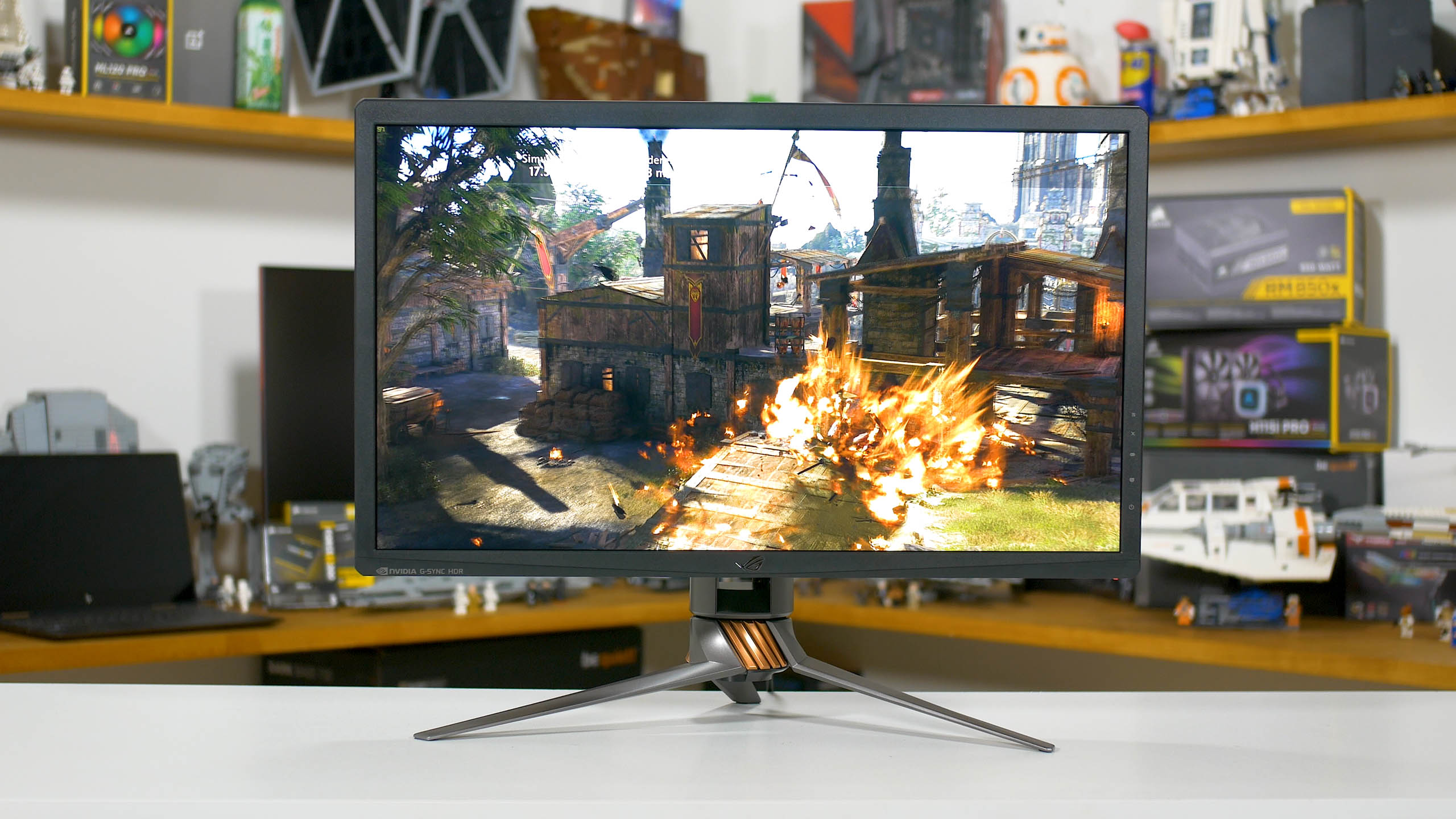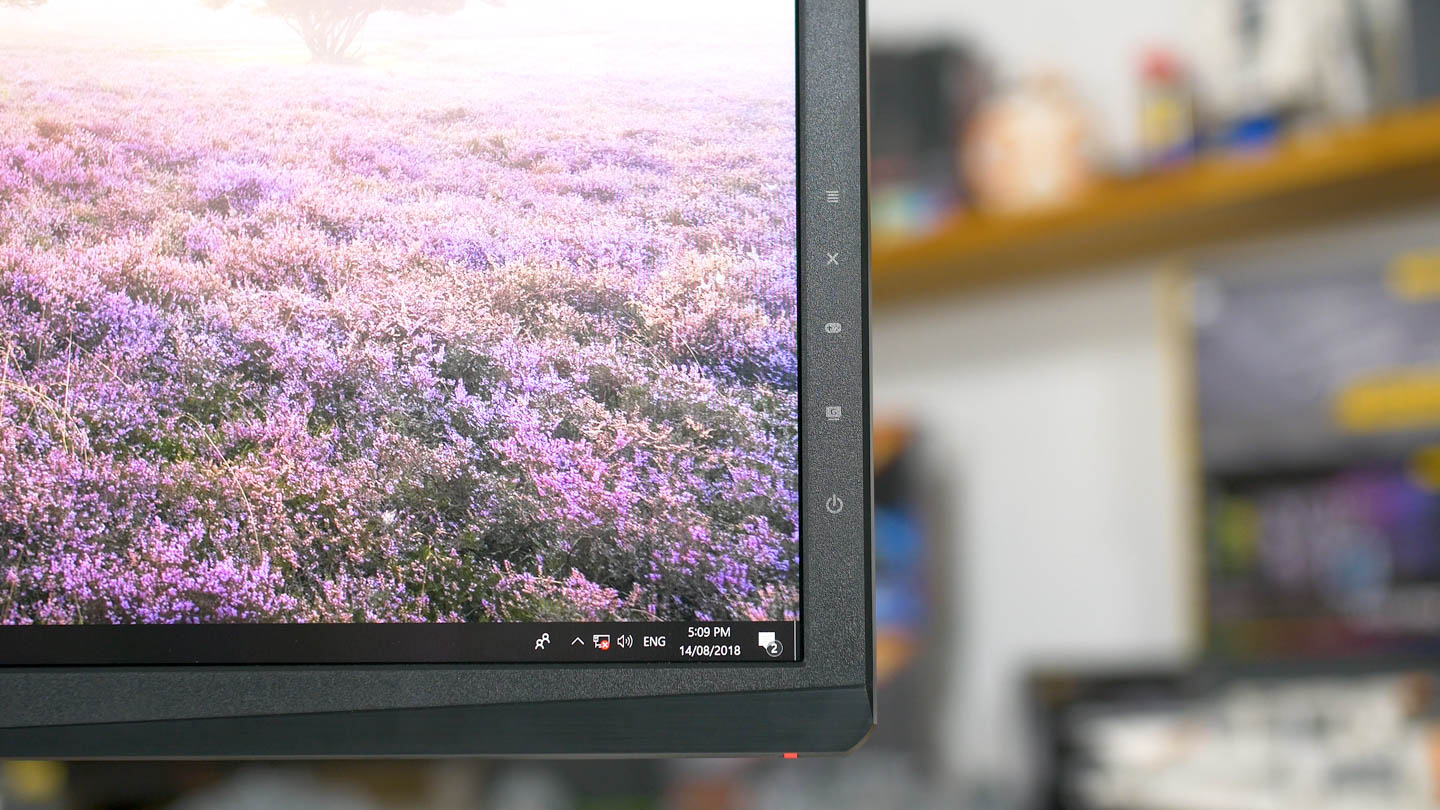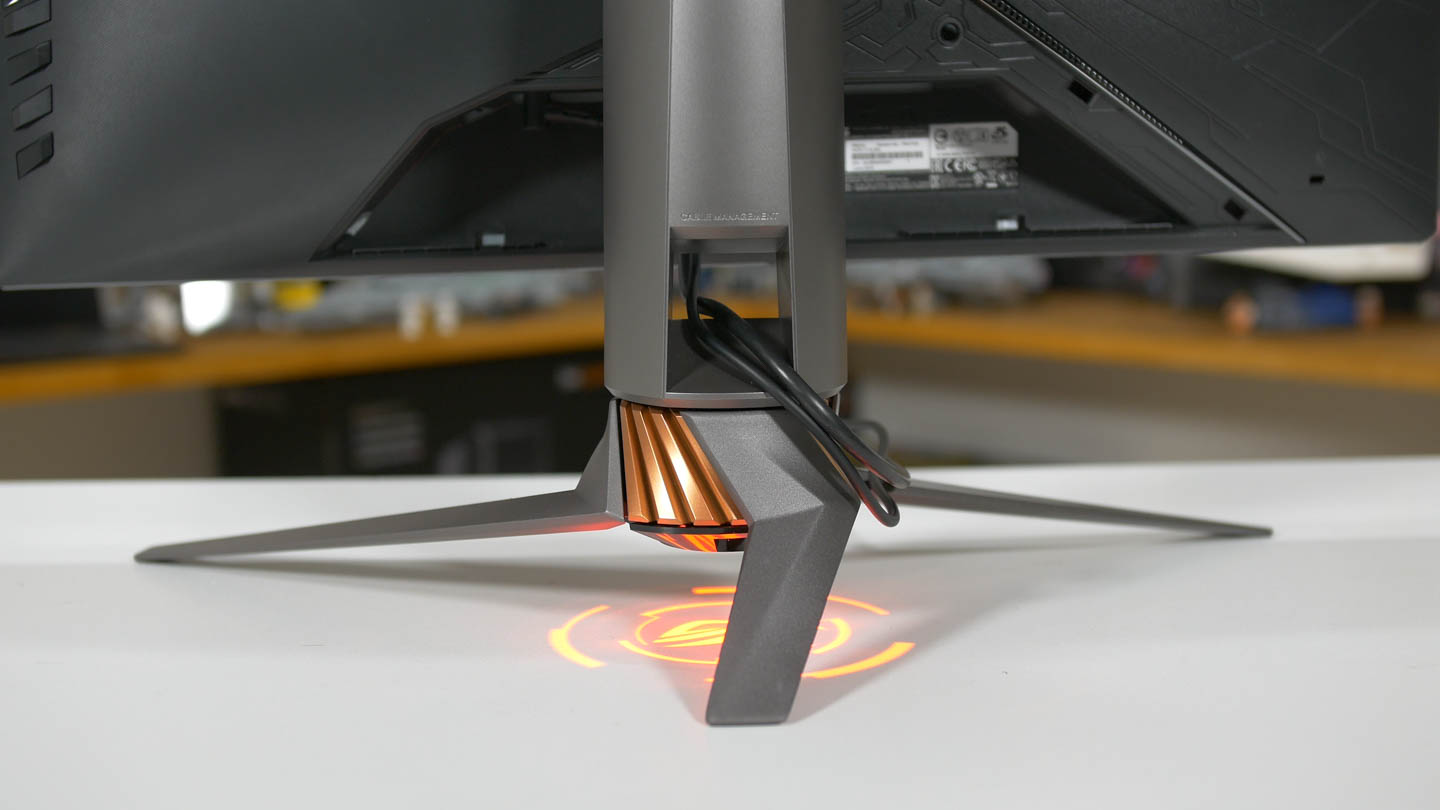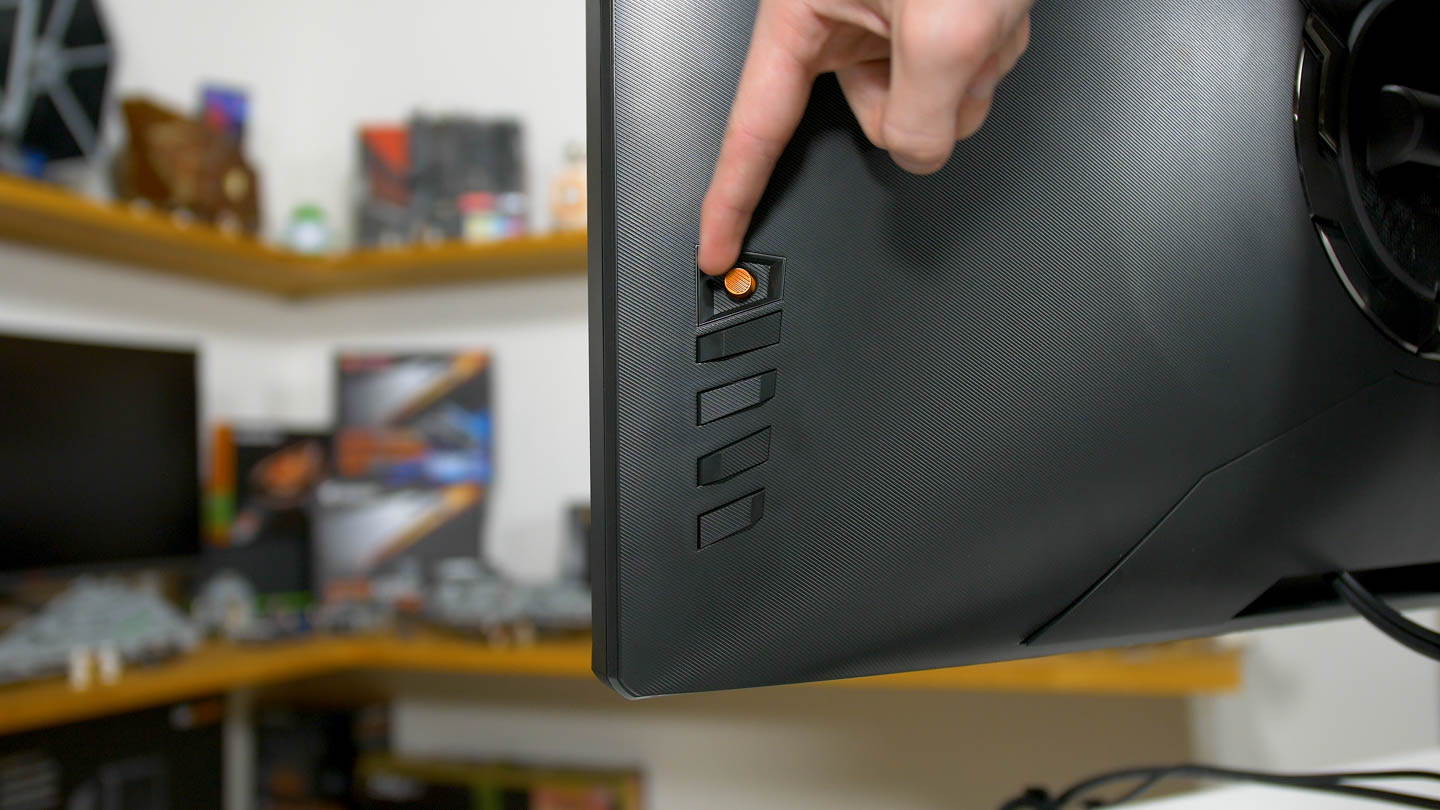In the realm of gaming monitors, the long awaited Asus ROG Swift PG27UQ is something truly special. This is the first G-Sync HDR monitor on the market, sporting top-of-the-line specs like a 4K, 144Hz IPS panel with 1000 nits of peak brightness and 384-zone backlighting. It's basically the highest end monitor you can get right now, with proper support for HDR and never before seen refresh rate capabilities at this resolution.
It's also the most expensive monitor you can get right now outside of high-end professional monitors, and certainly the most expensive gaming-class monitor, at $2,000. This makes it roughly twice as expensive as the next most expensive gaming monitor, so you'd really want it to tick every possible box and last for many, many years without needing an upgrade.
There are many different aspects of this monitor to go through in the performance section, but first let's take a look at the design, because this isn't your typical 27-inch gaming monitor.
Yes, we're getting all the usual Asus gamer style garbage-like RGB LEDs on the back, projected light under the stand, plenty of interesting patterns and design elements, and a typical Asus ROG color scheme.
It's not a minimalist or stealthy design whatsoever; in fact, it's very obvious this thing is designed for 'gamers', much to my annoyance.
But it doesn't tick every box in the modern 'gamer display' checklist. It's not curved, which personally I prefer for 16:9 monitors and particularly those of this size. I don't think having a curved panel adds anything to the experience at 27-inches so that's a positive. Also, the bezels are quite large at 17 to 22mm and the display overall is a bit of a chunky beast. In fact, it's just as fat as some curved monitors without being curved at all, not that this really matters.
It's also the first monitor I've ever reviewed that requires active cooling. A vent just in front of the display inputs on the rear pumps out hot air through a slow-spinning but audible fan. The fan is needed to cool the new G-Sync HDR module, which is essentially an expensive, reasonably powerful FPGA.
The module dumps out quite a bit more heat compared to the old G-Sync module so the fan is required.
In a quiet room the fan is very obvious; it's definitely not loud, but the hum is audible above my PC's fans while idling, so silent PC enthusiasts will hate it, especially considering basically every other monitor in existence does not require active cooling. The fan does stop eventually after being in an idle state and 'off' for a long time, but you'd think the process could be a bit quicker, particularly as the monitor uses 27 watts while in idle displaying nothing before going in to a deep sleep.
Moving on, we get the usual inputs for a G-Sync monitor: DisplayPort 1.4 and HDMI 2.0 along with a two-port USB 3.0 hub and a 3.5mm audio jack. Only DisplayPort supports the full refresh rate, HDMI is limited to 60 Hz and doesn't support G-Sync.
The stand is sturdy and supports a great range of motion, including tilt, height adjust, swivel and pivot so you can use the monitor in a portrait orientation if you desire. Only the legs are fully constructed from metal, the rest of the monitor including the stand pillar is a rather unimpressive plastic, especially for a $2,000 product. The build quality isn't bad - there are no visual defects or misaligned elements - but a more premium finish would be appreciated at this sort of price.
The on-screen display uses a directional toggle, which becomes necessary when you pack in as many features as Asus does. You won't find anything unusual in the OSD, all of Asus' usual cheat crosshairs, low blue light modes and different gaming modes have made the cut.
There are also some HDR-specific features like backlight modes that I'll talk about later, while ULMB or ultra low motion blur is missing, a feature normally found on high-refresh G-Sync monitors to improve clarity through backlight strobing. My guess is ULMB is incompatible with the new G-Sync module and I doubt many people would choose to use it over G-Sync with HDR anyway, so not a big loss.






